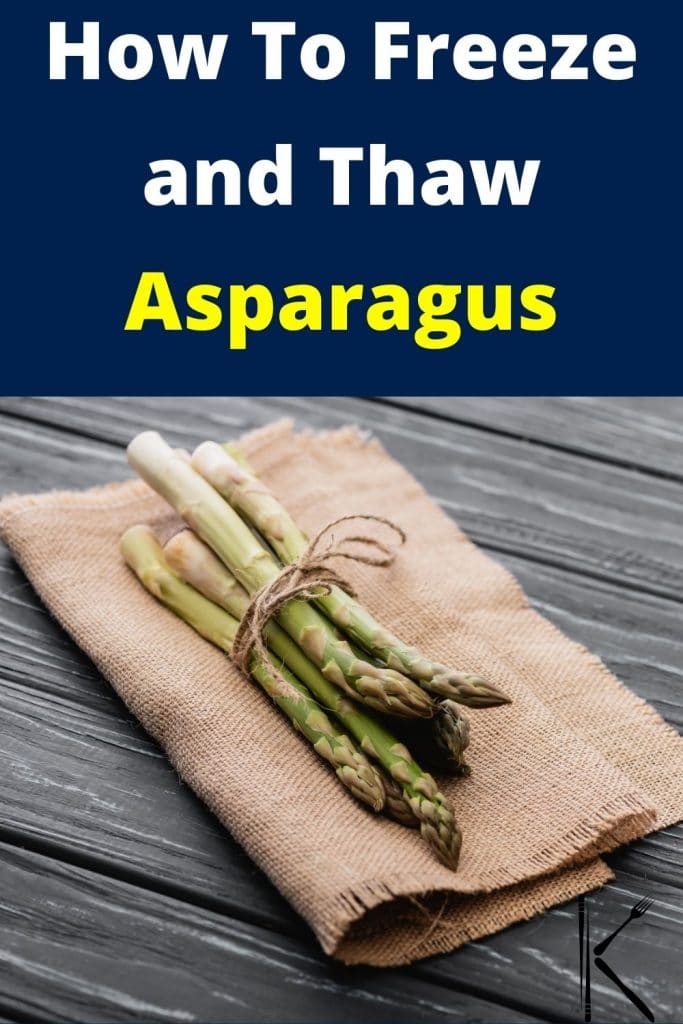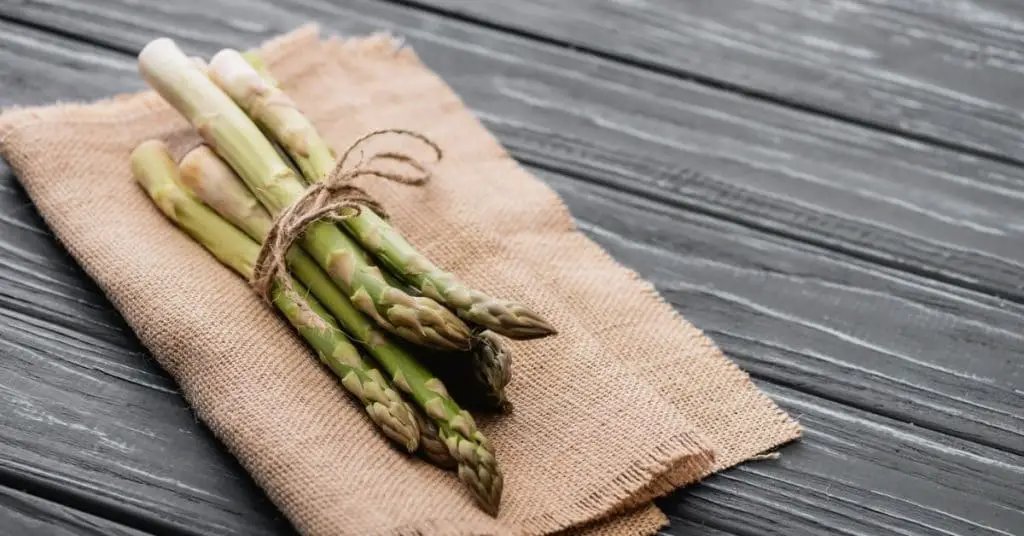Shortly, yes, you can freeze fresh asparagus, but keep in mind that the texture will change slightly in the freezer. Blanching the asparagus before freezing helps preserve its quality and extends its shelf life for several months.
These crispy green spears make for a delicious quick-fix meal, side dish, or snack. Asparagus can be eaten raw or cooked and prepared in a variety of different ways.
Asparagus is a seasonal spring vegetable which can make it expensive to buy out of season.
The good news is that you can preserve asparagus in the freezer for 8 to 12 months, making it possible for you to purchase it at in-season prices and enjoy it all year round.
You will, however, need to take a little time to prepare the asparagus for freezing to ensure it remains well-preserved. Below is a full guide to freezing asparagus.
Can Asparagus Be Frozen?
Yes, your can freeze asparagus although it is important to note that the texture will change somewhat in the freezer.
Ice crystals form and damage the cell walls on freezing which results in a softer, less crisp vegetable once thawed. Frozen asparagus is, however, still perfect for use in any cooked dish and that is why freezing it is ideal for preservation.
To keep the asparagus good for months to come, you will need to blanch it before freezing.
Blanching it in boiling water stops the ripening enzymatic activity which eventually causes the vegetable to spoil. If you do not blanch the asparagus, the enzymes continue to cause changes even while frozen which results in faster quality deterioration.
Unblanched frozen asparagus will keep successfully for only 1 to 2 months in the freezer and will have a less vibrant color, poor texture, and a slightly bitter taste.
How To Freeze Asparagus
Asparagus is suitable to freeze cooked, raw, blanched, or unblanched. Follow the steps below for the best preservation method.
Step 1: Wash
Wash the raw asparagus thoroughly to remove any sand, chemicals, or bugs. To ensure the stems are properly clean, soak them in salt or vinegar water. Fill a bowl with water and add one to 2 tablespoons of salt or vinegar. Leave the asparagus in the water for a few minutes and rinse well.
Step 2: Sort and Clean
Remove any damaged or brown stems from the bunch as they won’t freeze well and trim off the hard woody ends. Sort the stems into sizes according to the thickness of the stem.
If you are planning to use the asparagus in smaller pieces, cut it into pieces now as it will be difficult to cut it after freezing.
Step 3: Blanch Asparagus
Heat a large pot of water on the stovetop till boiling. While the water is heating up, fill a large bowl separately with ice and cold water. The larger asparagus pieces will take longer to blanch, so add them into the pot of boiling water first.
After the thicker spears have cooked for one minute, add the medium size spears to the boiling water. After another minute, add the small thin spears and boil for only 90 seconds more.
Immediately remove the blanched asparagus spears by straining them through a colander or slotted spoon and placing them straight into the ice water.
You do not want the asparagus to cook, the aim is just to kill the ripening enzymes for preservation purposes and immediately stop the cooking process by submerging it in ice cold water.
Step 4: Dry
Once cold, remove the blanched asparagus from the ice bath. Drain the asparagus and dry it with a clean towel to remove as much moisture as possible. Excess moisture will form crystals on freezing causing textural damage to the spears.
Step 5: Flash Freeze (Optional)
Place the spears on a baking sheet in a single layer and place it in the freezer. Only leave them just until frozen solid. You do not want the spears to be exposed to air for too long in the freezer.
The flash freeze method prevents the asparagus from clumping together once packed allowing you to only take out as many as you need at a time for cooking. Once fully frozen, remove the spears from the freezer.
Step 6: Pack
Pack the asparagus into resealable freezer bags straight away. Press out as much air as possible and seal tightly. The more air around the asparagus, the greater chance there is of freezer burn developing.
Step 7: Label and Freeze
Write the date of freezing on the freezer bags so you know how long the asparagus has been frozen.
How To Thaw Frozen Asparagus
Since frozen asparagus is best used in cooked dishes, there is no need to thaw it. Use frozen asparagus straight out of the freezer and add it to the dish you are cooking. You may need to add 1 or 2 minutes to the cooking time.
Types of Asparagus
Green asparagus spears are the most popular type of asparagus. Its crisp spears are thinner than other types. Asparagus also comes in purple and white varieties. Purple asparagus has higher sugar and low fiber levels. It is more tender and thicker, with a less bitter taste.
White asparagus is grown in the dark where it cannot photosynthesize and turn green. It is a tender vegetable and generally more expensive due to its limited availability. The lower end of white asparagus should always be peeled before serving.
Asparagus can be eaten raw with a lovely crisp texture or cooked which softens the stems and unlocks new flavors. Although it is popularly served cooked with salt, pepper, and olive oil, it also holds up well to assertive flavors like lemon and rich sauces like hollandaise.
Asparagus can be cooked using a steam method, stir-fried, grilled, boiled, charred, used in a quiche, pasta, salad, sauces, or on pizza.
FAQs
Conclusion
Keeping asparagus frozen will allow you to cook these green veggies year round long after asparagus season has ended. If blanched before freezing, they will last for up to a year in the freezer.
Simply pull a few spears out of a freezer bag and toss them in with a casserole, stew, or pasta, or take the whole lot and make a bowl of scrumptious asparagus soup.
Up Next: Can You Freeze Celery?

Image by VitalikRadko/depositphotos









